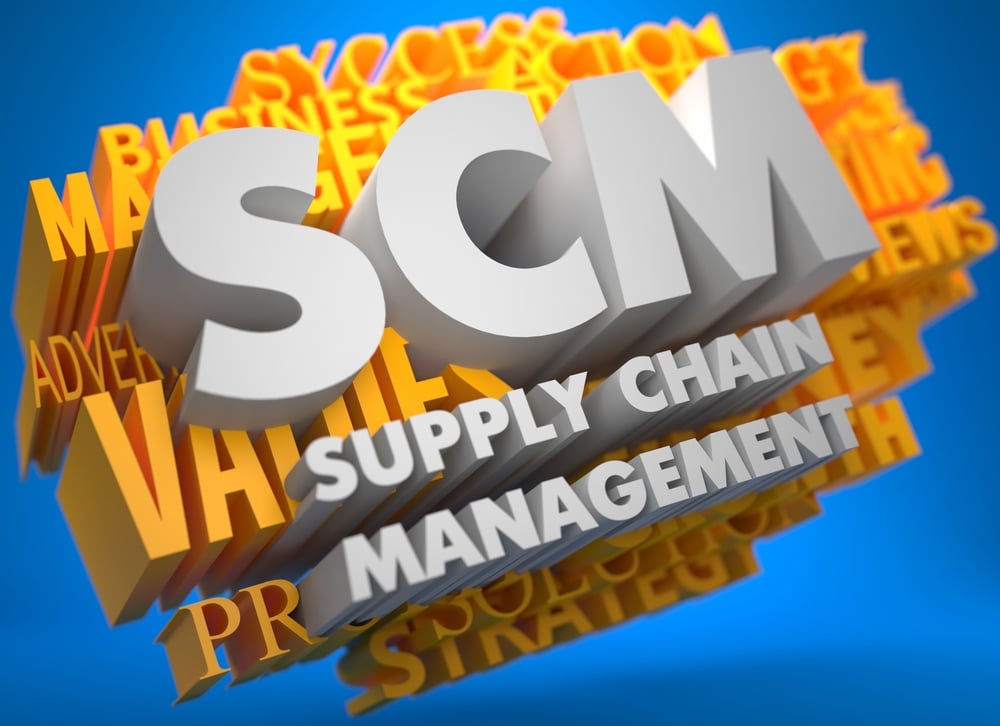Posted by Data Stems ● May 4, 2021 11:00:00 AM
What is Supply Chain Management | Everything You Need To Know
Businesses can efficiently serve their customers by making supply chain management a practical and strategic priority. The supply chain includes people, activities, organizations, resources, and information required to move a service or product from inception to the end-user. The management and optimization of the flow of services and goods, including creation from raw material sourcing to manufacturing, logistics, and final delivery, is called supply chain management.

Basic Steps In Supply Chain Management Process
- Planning
The first step consists of 3 parts:
-
-
- Demand planning – The process of demand forecasting to ensure products can be delivered reliably. Effective demand planning can align inventory levels with highs and lows in demand, enhance profitability, and improve the precision of revenue forecast.
- Merchandise planning – A systematic method to planning, purchasing, or selling merchandise to increase the (ROI) return on investment by concurrently making inventory available at times, places, quantities, and prices that the market demands.
- Trade promotion planning – A marketing technique to maximize the demand for goods at retail stores based on display fixtures, special pricing, no-obligation gifts, value-added bonuses, and other promotions.
-
- Sourcing
After planning, the next step is sourcing. Sourcing determines vendors who will procure products and services to meet actual/planned demand most efficiently and economically. Sourcing can be of both perishable and non-perishable goods. For perishable products, it is recommended to have the least possible supplier’s lead time to encourage a minimal inventory approach. However, for non-perishable products, the number of days for inventory to reach zero levels must be higher than the supplier’s specified lead time so that you can’t get a loss in revenue.
- Making
As per the preference and requirements of the customer, the company will perform all the activities from the transformation of raw material to the end product. Activities like assembling, testing, and packaging happen at this step. Positive feedback from customers creates a win-win situation for both the end-user and the manufacturer. The most metric-intensive step of the supply chain management process is the making stage, where companies can assess the quality levels, production results, and employee productivity.
- Delivery
The fourth most crucial step of the supply chain management process is the delivery stage, where the goods are finally delivered to the destined location of customers by the supplier. This stage is considered the logistics phase where companies collaborate for the order’s receipt from customers, establish a warehouse network, pick carriers to deliver the goods, and receive payments by setting up an invoicing system. Sometimes, firms outsource the delivery process from other companies who can oversee home delivery or special handling requirements.
- Returning
The next step of the supply chain management process is the returning phase. In this step, defective or damaged products are returned by the customers to the supplier. This step is considered a problematic section for companies as they have to respond to customer’s complaints and queries. It’s essential for supply chain managers to establish a flexible and responsive network to handle defective, damaged, and different products returned by the customers and facilitate the return process.
- Enabling
To operate effectively, supply chain management requires several support processes to monitor all the information throughout the process and assure compliance with proper regulations. Enabling step includes HR, finance, IT facilities, product design, sales, portfolio management, and quality assurance.

BENEFITS OF SUPPLY CHAIN MANAGEMENT
- Higher Efficiency – When your business incorporates supply chain, logistics, and product innovation strategies, it can not only predict demand but can act accordingly.
- Reduced Cost Effects – Supply chain management, when done well, can decrease the cost effects by improving the inventory system, adjusting the storage space for finalized products to eliminate resource damage, improving the system’s responsiveness and your relation with both vendors and distributors.
- Customer Retention – It helps firms establish an outstanding reputation in the market by increasing the system’s responsiveness to customer demands. This doesn’t only attract a new audience but also influences their loyalty to your company.
- Improved Risk Assessment – Effective supply chain management lead to proactive actions regarding quality control. Businesses can predict risks and can have restorative solutions to cover or dodge the losses they might experience from disruptions.
- Reduced Processes Delays – Another advantage is efficient coordination that results in minimized logistical errors, inconsistencies in distribution, and delays in shipment or production.
Supply chain management is affecting every facet of modern firms. Continuous evolution is the new norm today. Whether facing digital disruptors or technology, the transformation in skillsets or changes in operating models, supply chain executives are certain: the traditional ways will not position them as a leader. Without effective supply chain management practices, firms will eventually end up losing business and disappointing customers. Companies that efficiently utilize the power of supply chain management will overtake their toughest competitors and become leaders in their field.
Topics: technology, business, supply chain management
